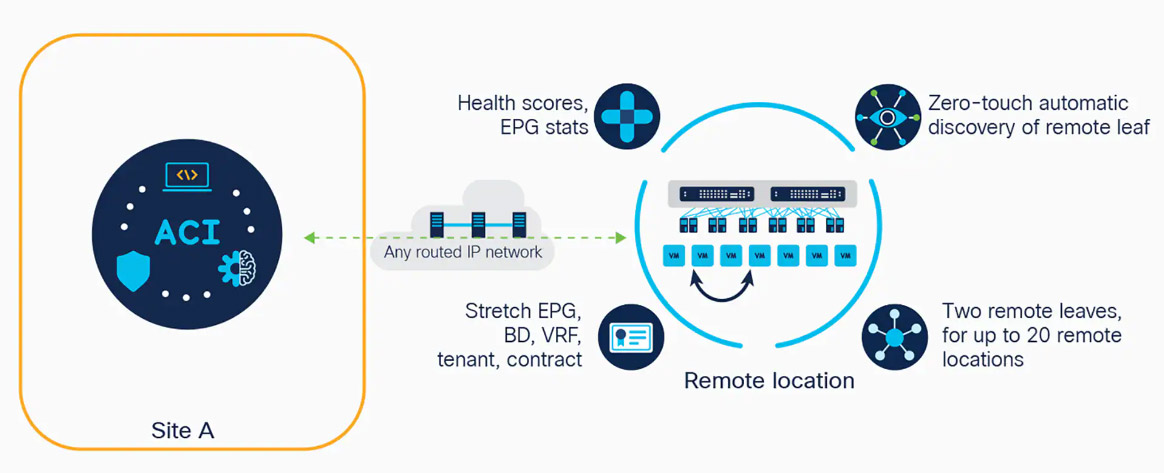Cisco ACI consists of the following architectural solutions:
* Cisco ACI Multi-Pod
* Hybrid and multicloud
* Cisco ACI physical remote leaf
* Cisco Mini ACI Fabric
Cisco ACI Multi-Pod : Cisco ACI Multi-Pod is part of the “single APIC cluster / single domain” family of solutions; a single APIC cluster is deployed to manage all the different ACI networks that are interconnected. These separate ACI networks are called “pods,” and each of them looks like a regular two-tier, spine-leaf topology. The same APIC cluster can manage several pods, and, to increase the resiliency of the solution, the various controller nodes that make up the cluster can be deployed across different pods.
Hybrid and multicloud : IT organizations approach their multicloud strategy by breaking it down into three pieces:
* First : Take stock and make a plan across their teams and technologies. Optimize what they have, adopt new skills, and modernize to meet new requirements. Establish the connections, security, and processes to create a highway for rapid change and delivery of new services.
* Second : Extend the data center where it needs to go. IT can become the one-stop-shop for private and public resources and to make them secure, consistent, and seamless for their environment.
* Third : Optimize, because “good multicloud starts at home.” For those workloads and data to land securely and efficiently on premises they need private and hybrid cloud platforms that offer self-service consumption and the ability to move workloads seamlessly from private cloud to public cloud and the edge.
How Cisco ACI can help : Cisco ACI occupies a unique position in a cloud ecosystem because clouds ultimately depend on the network that uses them. For cloud builders, we make complete automation with a software-defined physical infrastructure in ACI. ACI, as a multicloud software solution, puts people in control of their public and private cloud resources in a secure way using single pane of glass management. IT teams can easily connect and manage infrastructure anywhere from core-to-edge.
Expected outcomes :
* Increase value of IT team. DC I&O teams become builders and brokers of services that can offer the right mix of performance, security, cost, location to LOB stakeholders, on premises in the core DC or at remote sites, or in the public cloud. Developers and application architects can operate with a consistent development and run-time environment whether on premises or in the cloud.
* Accelerate change while protecting the business. The connections, security, and processes are established to create the highway for rapid change and agile delivery of new services.
* Multicloud continuity. Infrastructure resources are managed at any location at any scale to support new initiatives in IoT and mobility, and AI/ML technology is taken out of the equation so that application deployment is driven by business needs and cost considerations, not by technology limitations.
Cisco ACI physical remote leaf : With Cisco ACI physical remote leaf, customers can place a regular leaf switch in a remote or satellite location and connect back to the spine switch in the main (on-premises) location and, in turn, extend Cisco ACI policy into the remote or satellite location. By doing so, customers can also take advantage of all the benefits of the physical remote leaf, from diverse interfaces to superior performance, and scale and built-in encryption.
 Cisco Mini ACI Fabric :
Cisco Mini ACI Fabric : With the introduction of
Cisco ACI Mini Fabric, customers can now leverage an optimized Cisco ACI solution for their small-scale deployments. This solution comprises APIC-CLUSTER-XS (one physical and two virtual controllers) along with two spines and a minimum of two and a maximum of four leaves.
